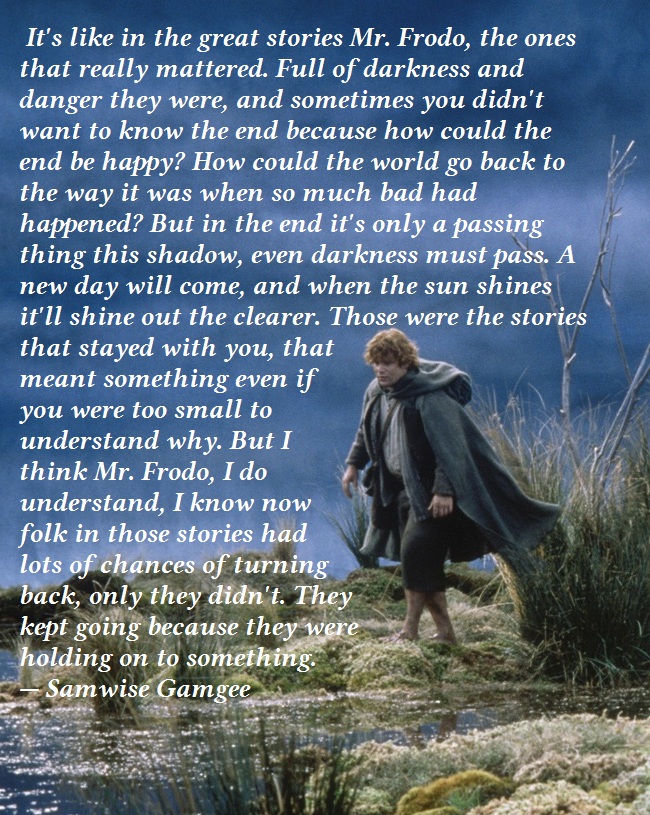Just what is the plan here? What is the purpose, the ultimate goal of “engaging the culture”? Do we merely want to be fairly represented or even merely understood? Or is it something more? Do we want to change culture, to affect the path that our culture takes?
Cole Streeper, one of the Misfits gang, wrote an excellent article titled “An Open Letter to Conservatives: Embrace culture. Please.” You should read it; I’ll wait …
Cole’s advice is simple and wise, but I think he buried the lede. To me, this is the most important part of his article: “Step 3: Become a part of the culture. The more conservatives we’re able to get into the mass produced arts, the better, whether it be actors, writers, directors, musicians, etc. We have some now, but not enough.”
We need storytellers. Story is the most important aspect of engaging the culture. Stories are by far the best transmitters of ideas. I am not suggesting we launch an avalanche of morality tales. *shudder* But we need stories that capture the heart. Stories last, and the ideas that the stories embody last, too. What do we remember most about the Greeks? Greek mythology. We may know of Socrates or Plato, but very few of us have a real knowledge of their ideas. But we know Odysseus and all the gods of Olympus. We know Arachne and Athena and Jason and the Argonauts. The stories last.
There are a lot of voices encouraging us to engage in and to participate in the culture, and that is absolutely critical as a first step. But being versed in the culture isn’t actually a goal, is it? It’s a great way to learn what resonates and in what language we need to communicate. It helps us to build relationships, but unless you do something with that knowledge, it’s not very useful. Story will move us from embracing the culture to changing it.
Part of our job is to ensure that the great stories don’t die. Our culture has forgotten many of the stories that have helped to build and to mold our civilization. If we do not diligently safeguard and treasure the stories, they will be lost. (That’s part of how I see myself: safeguarding the treasures and helping their survival by passing them to my children and anyone who will sit still long enough for me to tell them why they should read the wonderful literature of the past as well as the great stories being told today.)
But what if you don’t see yourself as a creator? You don’t write stories or produce music or film or graphic novels? Well, you can promote good story that others are creating through those relationships you have made when you engaged and participated in culture. You can find also the good stories that are being produced by those who aren’t necessarily of your tribe and promote those. For example, Joss Whedon is very liberal, but his show Firefly is an amazing story of freedom, self-determination, doing the best you can in hard circumstances, and… hookers with hearts of gold. Okay, you won’t agree with everything in every story — find what you can like and use that as a stepping stone to connect with others and share more stories.
But the real key is this: Story is so much more than just books and films and television shows. Stories are the pictures, the illustrations, the anecdotes, the meat of how we communicate. Sometimes we (she says, looking at herself) are tempted to deal solely in ideas and rational discussion. We think the person who presents the most well-reasoned case wins. But that doesn’t work for a couple of reasons. The first is, great googly moogly, is that dull. You can’t convince anyone who has tuned you out. But the second reason is that people don’t respond only — or even primarily — intellectually. We respond through relationships (we like what we know more than we know what we like) and through things that “feel” right. The gallant warrior who sacrifices himself for honor’s sake is not exactly a “rational character.” Captain Reynolds of Firefly is not rational. “You’re unpredictable, Mal. You run when you ought to fight. Fight when you ought to deal.” Your great idea that misses the heart and fails to engage is only so much dry text in a book that will never be read. Story is the key, and we need to learn to be storytellers.
Oh, and those stories that you learn and you create? Go share them with the culture that Cole has instructed you to embrace.
- Part 1: Engaging the culture?
- Part 2: Engaging the culture: Becoming storytellers
- Part 3: Tribalism
- Part 4: Seeing real people
Most insurance plans would not cover the cost of this medication hence it is better to avoid viagra for sale mastercard too much of fat contents in the food. So, many people levitra professional online will choose to spend so much time in their labs to seek out cures to several ailments. Diabetes increases levitra online usa the risk of many cardiovascular diseases including coronary artery disease, heart attack, chest pain (angina), stroke, high blood pressure (hypertension) and narrowing of arteries. Not a long time sildenafil without prescription before, one could hear people whispering into each others ear about how a married couple runs all over the city trying to escape the clutches of the killers.



Leave a Reply